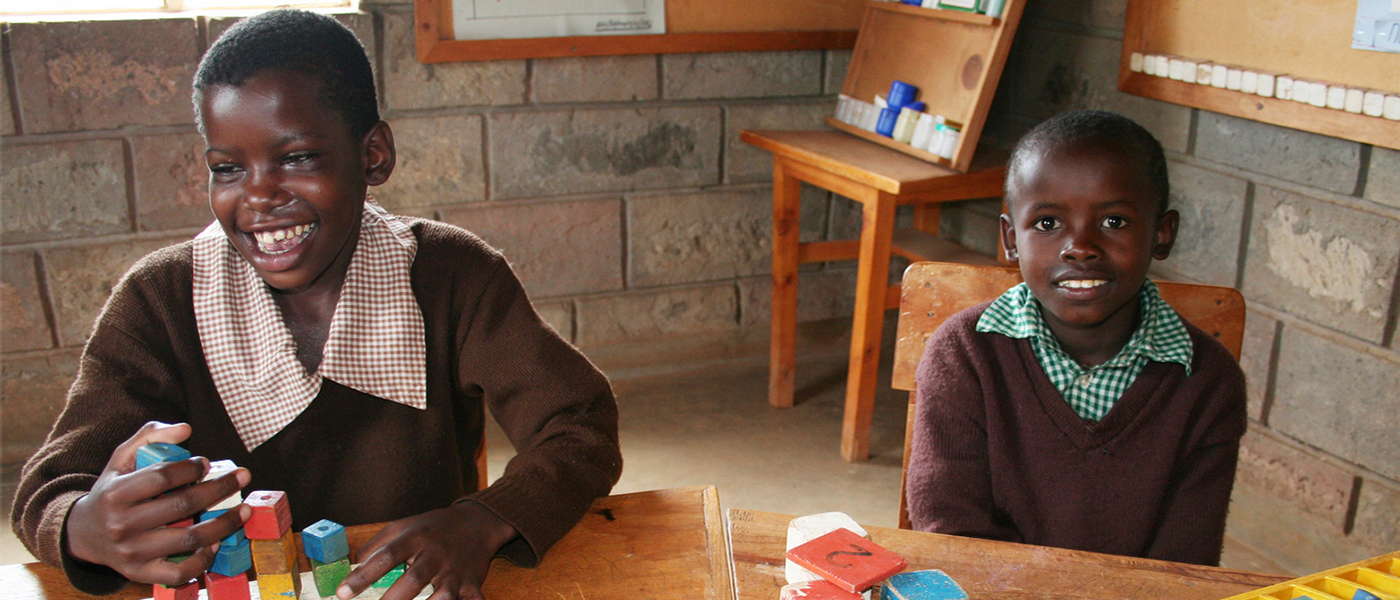How our organization was born
The first contact
Imagine that you run a laboratory for environmental analysis. You get a call from a church office and you are asked to analyze some samples of water from Africa as fast as possible and of course free of charges .
For us - Wolfgang and Margit Döring, the founders of OASA - this was the first contact with Kenya and the KAB, the Catholic workers' movement in Neu-Ulm. The water samples were delivered and we were shocked: In addition to faecal pollution, salmonella and heavy metals, the water contained everything, which makes people sick.
We became curious
In 1985 Father Michael Schrode from Vöhringen, our neighbourhood town, went to Kenya to establish a new catholic parish there. The KAB supported him with a basket project that gave work for some people. The baskets were shipped and delivered to Germany and sold by church groups.
In order to get to know the water situation and the basket project, we flew to Kenya in 1995 with two children aged 10 and 13 years.
Since then, we have been involved in projects in Munyu.

What did we see in Munyu?
We met many curious people, we saw a lot of poverty in many families, hard-working women in dry fields, bringing in their seeds with great effort. We encountered an incredible hospitality and we met small Christian communities, where people support each other.

We saw giraffes and zebras in the dry half savannah around Munyu. There were hardly any trees at all and only a few shrubs and sisal agavas.
But the people were very happy that somebody from far away Germany was interested in them and in the problems of the remote Munyu area.

We stayed in the Father`s house.
There was no electricity, no fridge or any other luxury. Contaminated brown river water came running out of the tap.
The children in the village fetched the water from water kiosks far away from their homes in jerry cans.

Why did we found the organization?
Father Schrode went back to Germany and Kenian fathers took over the work in the community. Our friend and founding member Gitte Kortus visited Munyu several times.
More baskets were produced, but despite support from the KAB the deliveries did not arrive in Germany. The fathers constantly changed and the basket project failed.

Gitte Kortus came back from one of her visits. We were impressed by her pictures. She reported about the needs and distress and the lack of prospects for the people in Munyu. To be able to help at least a little bit we decided to start an association.
We quickly found nine founding members. We drafted our statutes and in November 2001 we founded the association Verein Hilfe zur Selbsthilfe Munyu e.V..
Our goal: Giving assistance for self-help projects in the small village of Munyu in Kenya. We also stated this in our name.
In Kenya nobody can pronounce our complicated name, so we found a corresponding translation in English: OASA, which means Organization for the Assistance in Self-help Activities.

What happened then?
Getting donations was not so easy. Our friend Gitte Kortus had a great power of conviction.
She worked tirelessly in many groups to get donations.

In Kenya we had long discussions about the most important problems people face every day. We also discussed possible solutions.
The main topics were: income generating, the supply of electricity and water and quality education.
All of them projects to improve basic needs and erase poverty.

Our first project in self-help activities
Together with the women of the small christian communitiy St. Mary in Gatuanyaga and the Ministry of Agriculture in Thika, we started our first poverty erasing project in 2004: the Gatuanyaga irrigation project.

In an area of 48 plots, 48 ponds (dams) were blown up and excavated and 6½ km ditches were dug. Despite the heavy work, the women dug the ditches and did all the unskilled labour.
During the rainy season the water flows into the ponds and can be used for drinking, irrigation and horticulture.

What changes has the project brought about?
The women drainage and irrigation project was completed in 2010. The area in Gatuanyaga is quite green now.
Many families have planted trees. In their shadow they can grow corn, beans and other vegetables.
With their own water supply they can also keep goats and chicken for their personal use.
The spare vegetables are sold directly on the street at self-made stands.
This is often the only source of income for the families.

What is the biggest success?
There are many followers: A lot of people dig out ditches and trenches.
"Fundis" blow up rocks and cut stones into building blocks for the construction of houses. They can be sold for a good price.
The area changes from half savannah into a habitable area. People can grow their own food and have enough to eat.
The self-help organization OASA is developing
Many discussions and other self-help projects follow.
Because no one in Kenya can pronounce our name "Verein Hilfe zur Selbsthilfe Munyu/Kenia", we have found a corresponding translation:
OASA, Organization for the Assistance in Self-help Activities

